The 1950s saw some of the most promising young classical musicians die prematurely, seeming to wipe out a new generation of leading interpreters: among those lost are Ginette Neveu (in 1949), Rosa Tamarkina, Dinu Lipatti, Dennis Brain, Kathleen Ferrier, Ossy Renardy, Guido Cantelli, Noel Mewton-Wood, Richard Farrell, and William Kapell. The latter’s death at 31 in a fiery plane crash on October 29, 1953 on his return from a gruelling 3-month tour of Australia (37 concerts in 14 weeks) was a tragic end to a meteoric career that was not without its challenges. Fortunately the artist left behind a rich recorded legacy that has continued to enthral generations of piano fans.
A meteoric rise
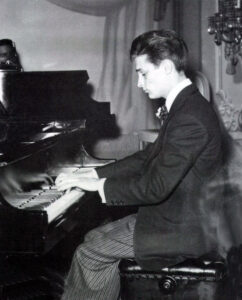 William Kapell was born in New York on September 20, 1922. He first studied with a pupil of Josef Lhévinne, Dorothea Anderon LaFollette, who is less remembered than his more famous teacher, the legendary Olga Samaroff (the former wife of conductor Leopold Stokowski), with whom he began to train in 1938. Two years earlier, at the age of 13, Kapell spent a summer in La Jolla, California with LaFollette, which allowed her to observe and supervise his practice regime.
William Kapell was born in New York on September 20, 1922. He first studied with a pupil of Josef Lhévinne, Dorothea Anderon LaFollette, who is less remembered than his more famous teacher, the legendary Olga Samaroff (the former wife of conductor Leopold Stokowski), with whom he began to train in 1938. Two years earlier, at the age of 13, Kapell spent a summer in La Jolla, California with LaFollette, which allowed her to observe and supervise his practice regime.
He began to achieve significant success in his late teens, winning the Youth of the Philadelphia Orchestra Contest in 1940 and the Naumburg Award and Town Hall Endowment Award in 1941. Performances with Eugene Ormandy and the Philadelphia Orchestra followed (a 3-year contract unprecedented for someone so young) as did a breakthrough invitation to play the Khatchaturian Concerto with the Philharmonic-Symphony Orchestra of New York in 1942, a success that would lead to making the world premiere recording of the work a few years later with the Boston Symphony Orchestra under Serge Koussevitzky (a 1945 recording was rejected and their 1946 account was issued to great acclaim).
A maturing artist
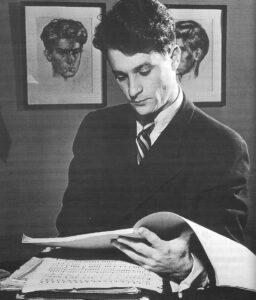 Kapell would come to believe that his early success robbed him of the time required to expand his repertoire to the degree that he desired, which would lead him to take two sabbaticals, in 1949 and 1952, the former to focus on the concertos of Mozart and Sonatas of Schubert, the latter to study and informally play chamber works with Heifetz, Piatigorsky, and other LA-based musicians. The commercialization of the music industry also distressed him greatly, from its emphasis marketing an artist’s youth or other more superficial factors over their musical substance – despite his own career having benefitted to a certain degree (but only to a certain point) from this approach. He fought with his Columbia Concerts to program the works of Aaron Copland, which he adored but which his agents found too outside-the-box for mainstream audiences (Kapell played his Piano Sonata and Piano Variations, and the composer was writing his Piano Fantasy for the artist).
Kapell would come to believe that his early success robbed him of the time required to expand his repertoire to the degree that he desired, which would lead him to take two sabbaticals, in 1949 and 1952, the former to focus on the concertos of Mozart and Sonatas of Schubert, the latter to study and informally play chamber works with Heifetz, Piatigorsky, and other LA-based musicians. The commercialization of the music industry also distressed him greatly, from its emphasis marketing an artist’s youth or other more superficial factors over their musical substance – despite his own career having benefitted to a certain degree (but only to a certain point) from this approach. He fought with his Columbia Concerts to program the works of Aaron Copland, which he adored but which his agents found too outside-the-box for mainstream audiences (Kapell played his Piano Sonata and Piano Variations, and the composer was writing his Piano Fantasy for the artist).
A letter that Kapell wrote to critic Virgil Thomson in 1952 carries some ideas that are still well worth considering today:
“It seems to me a crying shame that some of the fine pieces of our native literature are not played more often. If we allow the present and lamentable accent on commerce and sensationalism to continue, our whole musical culture will be threatened. The situation today appears today very serious and no little bit tragic. The powers that control this noble profession are making nitwits out of the large public… I, for one, am sick and tired of going along in any way with public ‘taste.’ Many artists do not realize by doing so they slowly are dying creatively; and when artists die, so does art.”
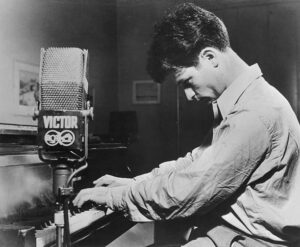 Becoming an exclusive RCA Victor artist in 1944 alongside his idols Horowitz and Rubinstein (he’d played for the latter as a child), Kapell would begin to set down what is a relatively sizeable discography given the fact that he only recorded for eight years and had incredibly high standards. His incessant drive to deepen his music-making and commit to disc only works whose essence he believed he had deeply penetrated and articulated made his studio sessions very serious affairs. Producer Jack Pfeiffer noted, “Our recording sessions were always so intense. There was never a moment when you could just sit down and relax and enjoy the atmosphere or anything of that sort. It was all extremely intense, very dedicated, very committed. He understood the importance of a recording in that he was getting to a much larger audience. And he wanted the recording to really say what he expressed with the music.” When listening to test pressings, Kapell would apparently be reasonably satisfied the first time, less so the second, and then tempted to reject everything the third.
Becoming an exclusive RCA Victor artist in 1944 alongside his idols Horowitz and Rubinstein (he’d played for the latter as a child), Kapell would begin to set down what is a relatively sizeable discography given the fact that he only recorded for eight years and had incredibly high standards. His incessant drive to deepen his music-making and commit to disc only works whose essence he believed he had deeply penetrated and articulated made his studio sessions very serious affairs. Producer Jack Pfeiffer noted, “Our recording sessions were always so intense. There was never a moment when you could just sit down and relax and enjoy the atmosphere or anything of that sort. It was all extremely intense, very dedicated, very committed. He understood the importance of a recording in that he was getting to a much larger audience. And he wanted the recording to really say what he expressed with the music.” When listening to test pressings, Kapell would apparently be reasonably satisfied the first time, less so the second, and then tempted to reject everything the third.
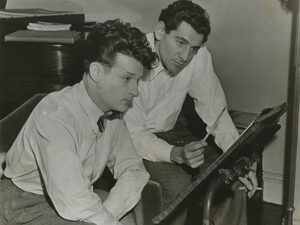 This intensity of focus and longing for perfection went hand-in-hand with a volcanic temperament that not only fuelled his impassioned performances but which was present in his life as well – often to his detriment. Kapell’s widow Ana Lou recalled her husband nearly coming to blows with a music critic (she was worried both about the journalist’s wellbeing and her husband’s hands), and he held himself and others to such exceptionally high standards that he was reported to have been less than congenial at times in his response to some fellow Juilliard students’ performances in master classes.
This intensity of focus and longing for perfection went hand-in-hand with a volcanic temperament that not only fuelled his impassioned performances but which was present in his life as well – often to his detriment. Kapell’s widow Ana Lou recalled her husband nearly coming to blows with a music critic (she was worried both about the journalist’s wellbeing and her husband’s hands), and he held himself and others to such exceptionally high standards that he was reported to have been less than congenial at times in his response to some fellow Juilliard students’ performances in master classes.
Nevertheless, he gave boundless praise when he believed it was due: when traveling in the Southern Hemisphere, he met the young New Zealand pianist Richard Farrell (a few years his junior) and was so impressed that he phoned up Samaroff and arranged for Farrell to receive a scholarship to study with her. (One wonders whether Kapell knew that Samaroff reportedly said that Farrell was her greatest pupil; he’s certainly far less remembered today. Tragically, Farrell died in 1958 at the same premature age of 31 in a car accident.) Kapell was unwavering in his admiration of Vladimir Horowitz, to whom he penned a letter filled with effusive praise, and he played for Schnabel and Serkin to further deepen his own artistry. He was also tremendously supportive to Raymond Lewenthal (a year his junior), who wrote that “Kapell had been unfailingly kind to me and encouraging and helpful.”
Challenges with critics
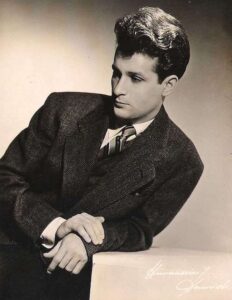 Kapell was particularly infuriated when his conscientiousness was not understood by critics. (Interestingly, the somewhat notoriously finicky Chicago critic Claudia Cassidy was enamoured by the pianist, whom she’d first heard at the age of 20 at Ravinia and with whom she developed a lasting friendship.) Despite being booked to return to Australia several times after his first visit in 1945, he had a challenging time with the critics there, which some evidence reveals he had good reason to dispute. One was so nasty in some of his reviews of the young pianist’s concerts that Kapell’s friend and mentor Jascha Spivakovsky, a Russian emigré to Melbourne a quarter century his senior, phoned the journalist to dispute his assessments; Spivakovsky’s son told me of the long and tense conversation, at the conclusion of which Jascha slammed down the receiver in fury and stormed into the music room in frustration.
Kapell was particularly infuriated when his conscientiousness was not understood by critics. (Interestingly, the somewhat notoriously finicky Chicago critic Claudia Cassidy was enamoured by the pianist, whom she’d first heard at the age of 20 at Ravinia and with whom she developed a lasting friendship.) Despite being booked to return to Australia several times after his first visit in 1945, he had a challenging time with the critics there, which some evidence reveals he had good reason to dispute. One was so nasty in some of his reviews of the young pianist’s concerts that Kapell’s friend and mentor Jascha Spivakovsky, a Russian emigré to Melbourne a quarter century his senior, phoned the journalist to dispute his assessments; Spivakovsky’s son told me of the long and tense conversation, at the conclusion of which Jascha slammed down the receiver in fury and stormed into the music room in frustration.
Spivakovsky not only vehemently disagreed with these opinions of Kapell’s artistry (and he was pretty tough to please!) but he also suspected, as did others, that this particular critic was only attending the first half of each concert. Spivakovsky therefore concocted a plan: he told Kapell to make a repertoire change for the second half of a recital where this reviewer was present but only to make the announcement after intermission. Sure enough, the column criticized Kapell’s way with Debussy works which he hadn’t played at all because he’d modified the programme. A scandal ensued, with public calls for the journalist to be fired because he was not attending the full concerts as he was paid to do; the critic attempted to defend his review by stating that if Kapell had performed the Debussy, that’s how he would have played it. Somehow he kept his post, but Kapell and Spivakovsky were at least somewhat vindicated.
A tragic end
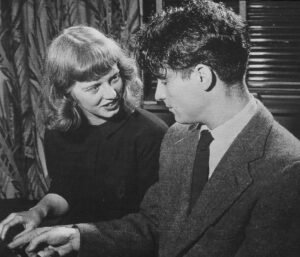
Kapell had met Spivakovsky on his first tour to Australia in 1945 and it has only become known recently that he had spent the last night of his life at his palatial home in the prestigious Toorak suburb of Melbourne prior to boarding his ill-fated flight. It was thanks to Spivakovsky that Kapell and his wife adopted a practice of taking different flights: Jascha had on a previous visit explained that he and his own wife always flew separately so as to not risk orphaning their kids should there be an accident (Willy and Anna Lou had two children).
The elder Russian and younger American would regularly stay up to all hours during Kapell’s visits, and Spivakovsky’s son Michael remembered his final visit well, particularly because of one eerie exchange: the American pianist showed young Michael his palm and said, “Look how short my lifeline is – I shouldn’t even be here.” It has never been published that Kapell had had his palm read, but his widow privately recalled that he had had such a reading in LA around 1952 and that he had been quite shaken by the assessment, despite his having joked about it on his last night in Melbourne. Just as ominously, Kapell – still enraged by the treatment of local critics – was reported in the local press to have stated prior to boarding his flight that he would never return to Australia.
Michael saw the news when he woke up the morning after the flight and had to break the news to Jascha, who was devastated (it was one of the two times he’d ever seen his father cry). Kapell’s wife Anna Lou heard the news from his friend and colleague Eugene Istomin as Columbia Artists’ secretary Ruth O’Neill was so distraught that she couldn’t bring herself to tell her. Istomin went to meet Anna Lou at the Meurice Hotel and he didn’t even say a word: his face betrayed what had happened, and Anna Lou simply said, “He is dead,” before adding, “But he had so much to do!” Raymond Lewenthal had just been thinking about Kapell as he was due back from Australia when he heard about the tragic plane crash on the radio: “I probably aged ten years that day. All I could say over and over again was, ‘All that work, all that work…'”
A rich legacy
While Kapell’s death has added intrigue to his biography and artistry, there is no doubt that he would have continued to be a major figure had he lived. His recorded legacy, comprising 7 CDs’ worth of studio recordings (not all approved by the artist) and many more of concert recordings from his teenage years through to his final performances in Australia, is a testament not only to his innate musical gifts but his development as a pianist and interpreter. His own high standards might have led him to disavow some of these performances but the artistry they reveal – even when less than perfect – is very impressive. Sony/BMG has under the care of producer Jon M. Samuels released Kapell’s complete RCA studio recordings in a set that included a few live recordings: the first edition was later supplemented with an added volume of rediscovered recordings from his final Australian tour (all are issued together in the latest box set). Several live performances have been issued on VAI, Music & Arts, JSP, Pearl, and Arbiter, with another set of rarities recently issued by Marston.
Kapell’s legendary March 19, 1945 disc of Liszt’s Mephisto Waltz was among his first RCA recordings, presented here in a transfer from a vinyl reissue. Made when the pianist was only 22, this recording is filled with the fiery passion, bold gestures, attention to detail, and glistening fingerwork characteristic of his performances. Kapell is the only pianist I can recall hearing who doesn’t slow down after the introduction.
As amazing as Kapell’s studio account of the Khatchaturian Piano Concerto that launched him to stardom is, this earlier 1944 concert performance with Ormandy conducting is even more intense and volcanic with its pacing and momentum – Kapell was a pianist who truly came alive in front of an audience, as this performance indicates.
A December 1, 1945 concert recording of Kapell playing Shostakovich’s Piano Concerto No.1 Op.35 with the Philadelphia Orchestra conducted by Eugene Ormandy, with Samuel Krauss as trumpet soloist. This work entered Kapell’s repertoire in 1944 (he called it ‘a delightful piece of nothing’) and it is a work he never recorded commercially. This unofficial recording was released on an Opus LP issued by Gregor Benko (co-founder of the International Piano Archives), with a live account of the pianist playing Falla’s Nights in the Gardens of Spain (also found on this page) on the other side. This wonderful performance finds the 23-year-old Kapell – who had only just signed a contract with RCA Victor – playing with great gusto and attention to detail (a missed opening entry notwithstanding). From the tongue-in-cheek opening movement through the more sombre slow movement and the crackling finale, Kapell navigates the shifting moods of the work wonderfully.
Kapell played Prokofiev’s Piano Concerto No.3 – one of the most popular piano concertos in our present time – regularly for many years, and he made a stellar studio recording of it with Antal Dorati conducting – yet this March 5, 1949 live performance with Leopold Stokowski leading the New York Philharmonic captures with even more high-octane energy the tremendous excitement he brought to the work.
For all the electricity he brought to modern works and thrilling showpieces, Kapell was not one who wanted to be typecast and he sought to play a wide range of repertoire. His June 24, 1946 recording of Beethoven’s Piano Concerto No.2 with the NBC Symphony Orchestra conducted by Vladimir Golschmann (set down in Carnegie Hall) is a fine example of his youthful exuberance fused with heartfelt devotion to music. Sparkling tone, clear articulation, and beautifully shaped phrasing fuse with Kapell’s enthusiasm to create a performance that is still admired almost seven decades after it was made – and according to Schnabel’s pupil Leon Fleischer, the great master heard this recording on the radio and thought it was his own… high praise indeed!
Kapell set down 29 of Chopin’s Mazurkas in six RCA Victor sessions at both Town Hall in New York and RCA’s Studios in Hollywood in 1951 and 1952. Kapell’s recording producer Jack Pfeiffer said that Kapell sight read a lot of them to sort of relax from the stress of recording the 3rd Sonata, and some of these accounts were only issued posthumously. There is some truly soul-searching, inspired and inspiring, and heartfelt playing in these accounts – among the glories of his discography.
The only known footage with Kapell at the piano is this TV broadcast that features him playing three works: Scarlatti’s Sonata in E Major Kk.380, Chopin’s Nocturne in E-Flat Op.55 No.2, and Gato, an Argentine Dance for Piano by Emilio A. Napolitano. He plays throughout with the intensity, sculpted phrasing, and rhythmic drive that characterized his pianism – and how wonderful to see him in action, despite host Alistair Cooke’s interruptions!
Early in my years of collecting I was lucky enough to come across a ‘bootleg’ LP of Kapell playing two works he hadn’t recorded commercially: Shostakovich’s Piano Concerto No.1 (found further up this page) and Falla’s Nights in the Gardens of Spain on an Opus LP that I wasn’t aware (at the time) was produced by International Piano Archives co-founder Gregor Benko. The latter performance comes from a November 13, 1949 concert with Leopold Stokowski conducting the Philharmonic-Symphony Orchestra of New York, a fine testimony to his impassioned pianism, with a tremendous sense of rhythm, sensual phrasing, and beautiful tonal colours.
Recorded November 29-30, 1950 in the RCA Studios, Hollywood, this account of the Brahms Violin Sonata No.3 in D Minor Op.108 with Kapell and Jascha Heifetz is a marvellous reading. Kapell was very friendly with the legendary violinist and according to Anna Lou when he was asked on short notice to make the recording, he said that he knew the work despite the fact that he didn’t, and he learned it almost overnight. One would never know given this beautifully cohesive account, with wonderful synergy between the two great musicians – they were to have recorded all three together, and Heifetz apparently never ‘forgave’ Kapell for dying young.
Here is a superb April 12, 1953 live recording of Kapell playing Brahms’ Piano Concerto No.1 in D Minor with Dimitri Mitropoulos conducting the Philharmonic-Symphony Orchestra of New York – 6 months before his death and his last Carnegie Hall performance. And what a performance it is, with impassioned climaxes, towering octaves, and beautiful legato phrasing in lyrical sections, and with wonderful support by Mitropoulos.
Not long after that incredible Brahms D Minor we hear Kapell in a very different kind of work with a very different kind of conductor: a superb June 30, 1953 Prades Festival performance of Mozart’s Piano Concerto No.17 in which Kapell is accompanied by the legendary Pablo Casals. This was the pianist’s first invitation to the festival (and sadly the last as his untimely death came only a few months later) and while many chamber music performances from the event had been issued, this YouTube link is the first time this particular recording has come to light.
Kapell plays with glorious sensitivity and a marvellously burnished sonority, with a joyful enthusiasm he often brought to his performances, though we do not hear the more earthy robustness that characterizes his Beethoven Second Concerto from a few years earlier. His skillful fusion of gorgeous tonal colours and dynamic shading bring a truly dimensional and emotional quality to his reading of this score (the 1st movement cadenza is stellar).
Two weeks earlier at the Prades Festival on June 16, 1953, Kapell replaced Eugene Istomin to join soprano Maria Stader in some Schubert Lieder in what was apparently his first time performing with a singer. Kapell’s bell-like sonority, fluid legato phrasing, and transparent voicing are also seamlessly integrated with Stader’s elegant delivery – a tantalizing taste of other collaborations that might have taken place had Kapell not died prematurely.
A particularly emotional recording of Kapell is a performance from his last recital in Australia from a week before his untimely death: an October 22, 1953 reading of the Chopin ‘Funeral March’ Sonata. Kapell never recorded the work (he set down the B Minor Sonata) and the occasion makes the existence of this amateur recording all the more meaningful. This was among the first broadcast recordings to be discovered from Kapell’s final Australian tour and was first officially issued by RCA in 1987, having previously been on an Opus LP in the 1960s. (Years later, other unissued recordings from the tour that had been captured on a Royce home disc cutter by cosmetics salesman Roy Preston were located and offered to the family. The communication reached Kapell’s widow on the 50th anniversary of the pianist’s death in 2003, and the other performances were issued in 2008 – click here for more info.)
This reading is indeed a blazing one, capturing the vigour and power of Kapell’s pianism and interpretative abilities, and even with the less-than-ideal sound the strength, nobility, intensity, and refinement of Kapell’s majestic interpretation can be readily appreciated – an incredible final testament to his artistry and career.
It is to be hoped that more performances of Kapell will be found, the Holy Grail of which is a November 16, 1949 New York Philharmonic account of the Tchaikovsky Piano Concerto No.1 (with a close second being a concert performance of Beethoven’s Appassionata Sonata). Given the nature of discoveries that have recently surfaced, it is not outside the realm of possibility that these might some day be located and made available. In the meantime we can be grateful that Kapell lived at a time when both studio and broadcast recordings were being made in abundance and that 100 years after his birth, so much of his artistry remains for present and future generations to appreciate.
Many thanks to Koji Attwood, Jon M. Samuels, and Michael Spivakovsky for sharing some invaluable information that is included in this post
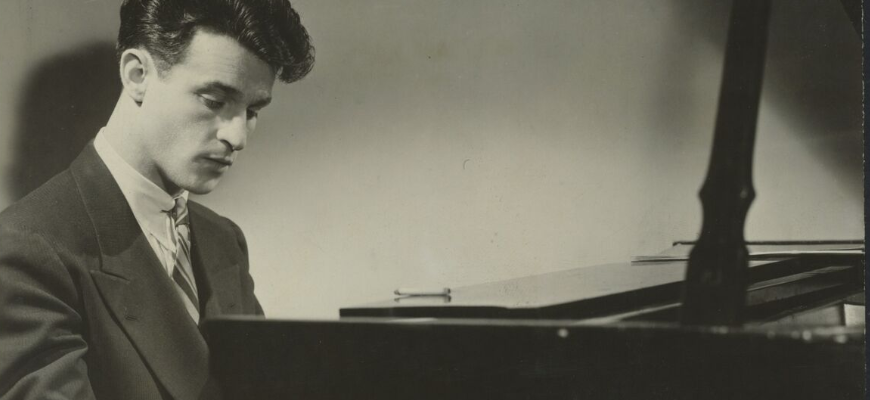
Comments: 3
Rosie Pentreath, why is Mr. Kapell not mentioned in your list of the twenty-five greatest pianists?
I have been an ardent admirer of William Kapell for many years.In 2013 I participated in the 60th anniversary hike south of San Francisco at Kings Mountain,the site of the plane crash which claimed William Kapell’s life
At age 11, in 1949, I had the occasion to first hear Kapell practice through a closed door as our family as cousins was visiting his. “Willy” was not to be disturbed—which was understood to be properly respectful of his powerful temperament, dedication and talent. But backstage at various concerts in subsequent years, I felt especially blessed to exchange a few words with him when he warmly greeted me and my family; on one occasion to my question who was his favorite composer, Kapell answered readily:”Rachmaninoff”. As one of a now much smaller group who were privileged to hear him in person, I continue to treasure those memories. Dr. Philip Wolfson.